Destinations
2024
2025

... where there are many holiday photos to enjoy.

The air holidays shown are ATOL Protected by the Civil Aviation Authority. Our ATOL number is ATOL 3253. ATOL Protection extends primarily to customers who book and pay in the United Kingdom. Click on the ATOL logo if you want to know more.
Photospot: rue-leaved saxifrage
Saxifrages have star quality. Wild saxifrages we associate with alpine or arctic habitats. Some are beautiful or spectacular. Many are grown as garden flowers.
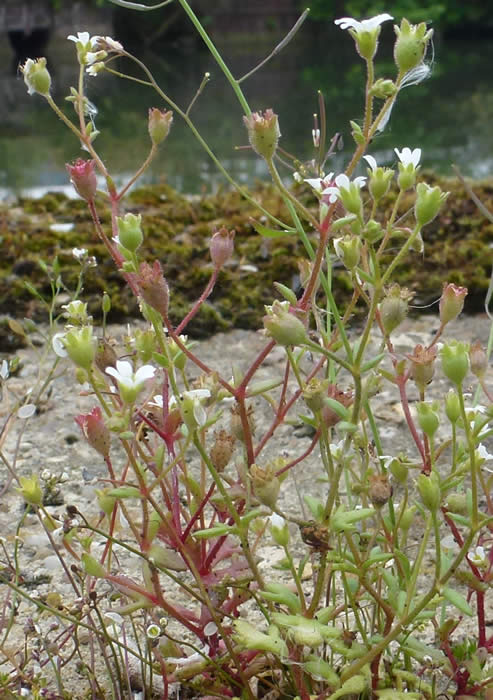 |
ID tips
Tiny, white flowers, 5-petalled.
Green stems and leaves, soon turning red.
Zig-zag stems.
Fingered leaves, stickily hairy - see below.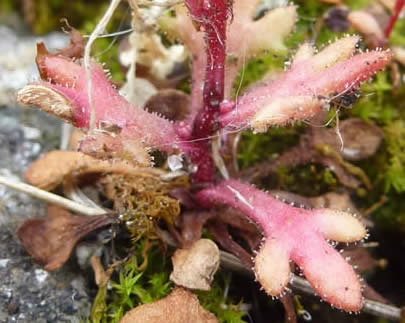 |
Chasing pavements
Yet one widespread saxifrage is unglamorous and overlooked. Rue-leaved saxifrage can be found in natural places like limestone pavements, but you're more likely to see it — if you make the effort to look for it — in high street pavements.
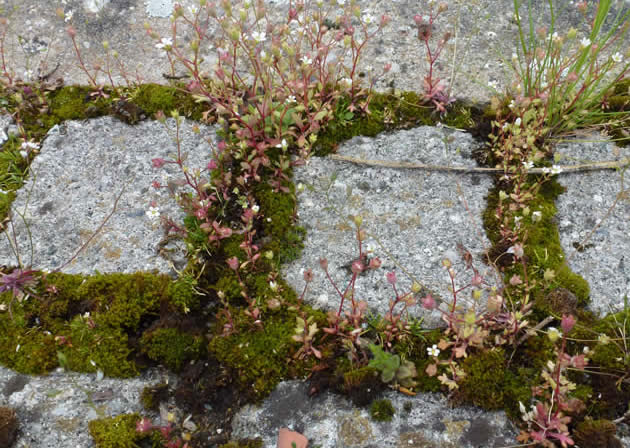
It likes lime - but that can include old mortar, gravelly car parks or even cement. The grid-like pattern above is moss-covered cement between granite blocks at Norwich's Riverside development. Rue-leaved saxifrage — mostly with red leaves here — is abundant.
Other saxifrages
The UK's other common saxifrage is meadow saxifrage, which grows in well-drained, 'unimproved' (= unfertilised) grassland.
Sloping road verges like this one often suit it. Frettenham, Norfolk, 4 May 2014. |
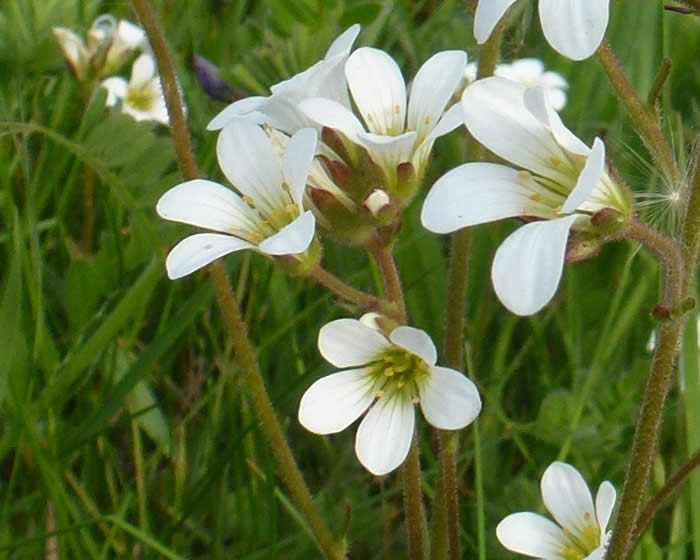 |
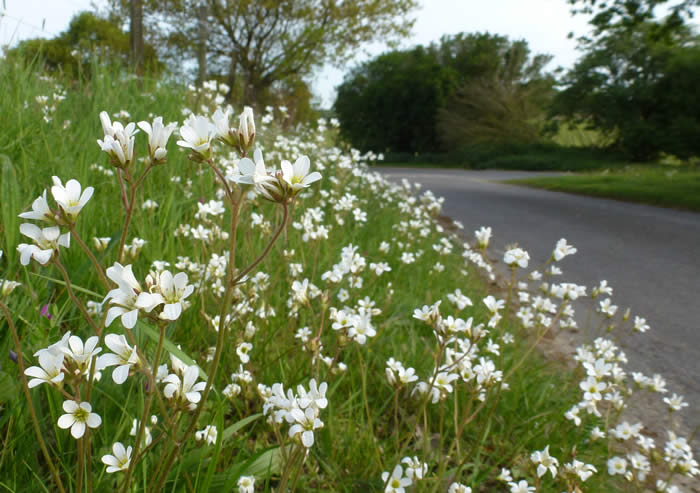
More nature notes . . . . . . . . . . . Photographs on this page by Chris Durdin.
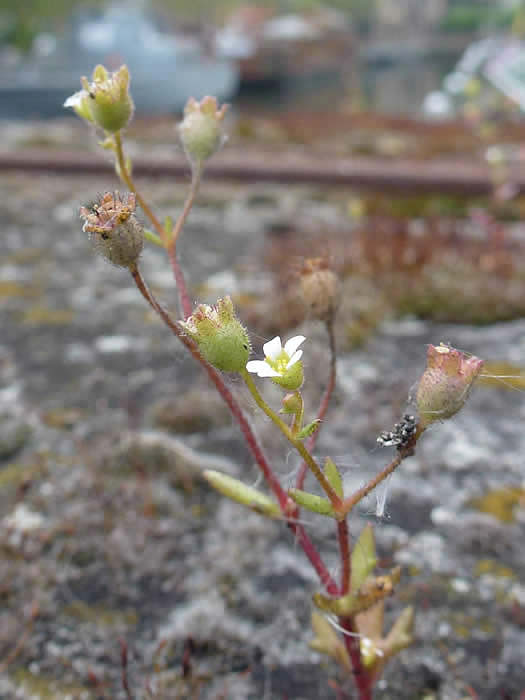
The tiny white flowers soon turn to seedheads - as on this one, like most on this page photographed on 1 May.
What's in a name
Saxifrage means stone breaker (in French casse-pierre), though whether that's an assumption from species that grow in rock cracks or of medicinal use for tackling kidney stones is unclear.
Scientific name: Saxifraga tridactylites. Tridactylites means three-fingered (though leaves can be 5-lobed and basal leaves spoon-shaped).
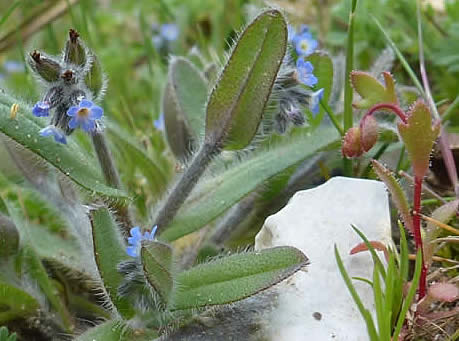
The photo above shows how rue-leaved saxifrage can also grow in disturbed ground. This minute plant, growing with early forget-me-not, is on an area at Center Parcs in Breckland that is harrowed annually to encourage rare and scare arable plants. 18 April 2014
Growing companions
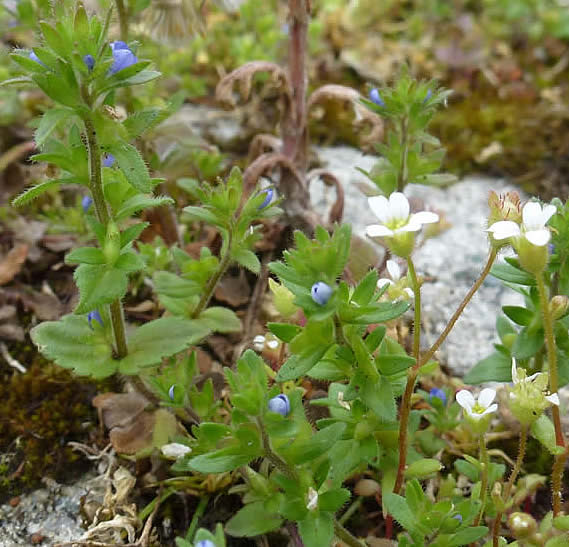
This rue-leaved saxifrage (white flowers, on the right) is growing with wall speedwell.
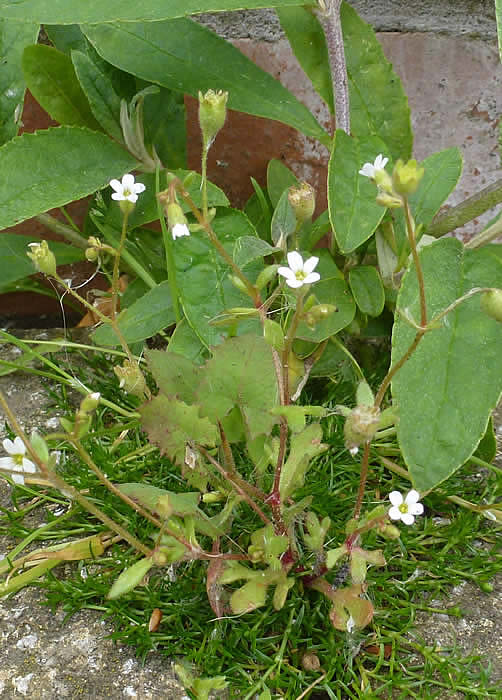
An urban mix: the rue-leaved saxifrage is growing out of procumbent pearlwort (even more overlooked as a plant than the saxifrage) and with a buddeia seedling behind.

Pyrenean saxifrage - growing near Gèdre, Honeyguide's base in the French Pyrenees.









